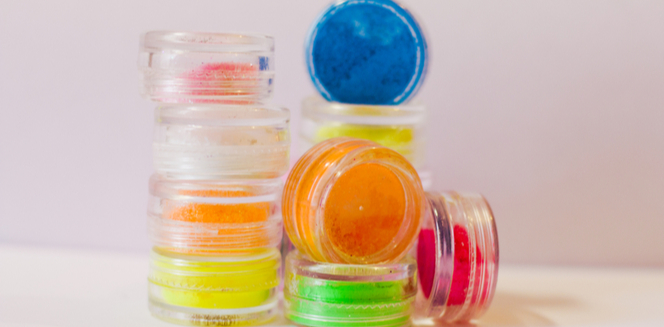Innovative utilization of thermochromic pigments to transform wearables and packaging

8 Sep
2020
Thermochromic pigments have been utilized in innovative way with new technologies and creative ways introduced by researchers and market players. From utilizing these pigments for wearables to packaging applications, new technologies have transformed the scenario. Thermochromic materials have been used in wearables to reflect the personality of wearer. Moreover, thermochromic ink is used in packaging applications to reduce cost, setup time, and wastage. In coming years, more inventions will come up and change the way thermochromic pigments have been used. According to the report published by Allied Market Research, the thermochromic pigments market is estimated to reach $595.0 million by 2027. Following are some of the trends and activities taking place in the industry.
Innovations have driven market players to utilize thermochromic pigments in novel ways. Researchers from the MIT Media Lab developed a wearable that can reflect a wearer’s personality. Thermochromic pigments have been used for development of a wearable known as DuoSkin. It is a customizable tattoo made from thermochromic pigment, gold leaf, layered adhesive, and a silicone interface. The gold leaf is used as a conductive material and there is a thermochromic layer beneath. When a battery is attached to a gold layer and heated up, pigment layer changes the color. A silicone interface is a tattoo layer and acts as an output display. In addition to these layers, researchers developed a smartphone app to control for updating skin status of wearer.
An NFC technology is utilized for communicating with tattoo. An Arduino mini is used as a microcontroller that is kept underneath the wearer's sleeve for processing sensor data. Touching the tattoo can change its color. Moreover, it takes nearly 30 seconds for displaying an image and 50 seconds for pigment to regain its original color. During the design part, gold leaf is needed to be cut at two millimeters with the help of electronic cutter. Moreover, there needs to be a well-thought design for even distribution of heat circuitry of thermochromic layer. These tattoos can last on the skin up to a day or two.
Packaging industry needs thermochromic inks that can be used for creating low-cost and safe packaging materials. Chromatic Technologies Inc. (CTI) launched thermochromic ink for utilization in solvent ink applications. This is one of the most useful launches for the packaging industry. More than 95% of suppliers of flexible packaging utilize solvent inks. Before the launch of thermochromic ink by CTI, these players used water-based specialty technology. This technology created a challenge in terms of efficiency, cost, and setup time. The CTI’s ink offers stronger colors in comparison to water-based ink.
Lyle Small, the Founder and President at CTI, commented that the firm made a technological breakthrough with invention of a single, finished, and print-ready solvent-thermochromic ink. It has a shelf-life of 90 days. Other inventions related to this failed as it offered shelf life of only eight hours and created a lot of waste. CTI’s ink eliminated a lot of production and economic limitations for its customers and developed a pipeline that can be brought into the market.
The company continues the trend of innovation with introduction of thermochromic technology which does not contain Bisphenol A, F, and S. Bisphenol A (BPA) is identified as “an endocrine disruptor.” However, it has been utilized in plastic packaging, food & beverage cans, and other applications. Many companies have been trying to limit the usage of this to ensure safety. There has been a lot of interest among market players for low-cost technology for monitoring cold chain, determining temperature abuse, and offer authentication. Realizing the need, CTI came up with its latest innovation for pharmaceutical packaging. Its BlindSpotz technology offers a low-cost printable sensor for drugs and pharmaceuticals to detect freezing, tampering, gradual warming, thawing, and authentication. This development meets the regulatory standards of pharmaceutical packaging.

Koyel Ghosh
Author’s Bio- Koyel Ghosh is a blogger with a strong passion and enjoys writing in miscellaneous domains, as she believes it lets her explore a wide variety of niches. She has an innate interest in creativity and enjoys experimenting with different writing styles. A writer who never stops imagining, she has been serving the corporate industry for the last five years.
Avenue: Entire Library membership of Allied Market Research Reports at your disposal
- Avenue is an innovative subscription-based online report database.
- Avail an online access to the entire library of syndicated reports on more than 2,000 niche industries and company profiles on more than 12,000 firms across 11 domains.
- A cost-effective model tailored for entrepreneurs, investors, and students & researchers at universities.
- Request customizations, suggest new reports, and avail analyst support as per your requirements.
- Get an access to the library of reports at any time from any device and anywhere.
Related Post
-
How are Submarine Cables Transforming Global Connectivity with Enhanced User Experience?
-
Endoscopy Procedures: Transformations in Techniques and Applications
-
AI-Powered Video Analytics: How the Product Actually Works for enterprises
-
Painting Robots: Transforming Precision Coating and Creative Applications
-
Innovations in Pharmacovigilance Systems Advancing Patient Safety
-
Understanding Edge Security: Keeping Data Safe Near the Source
-
Exploring the Use and Advancements of 3D Laser Scanners in Professional Applications
-
Reinforcing Industrial Controls with Smarter Tools and Training








